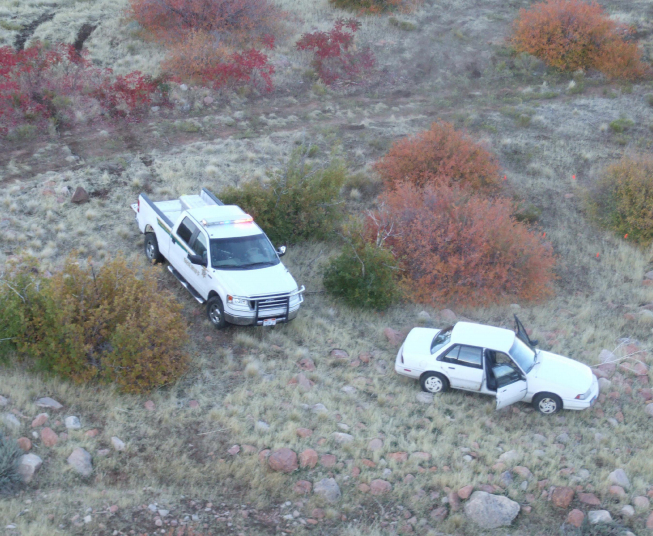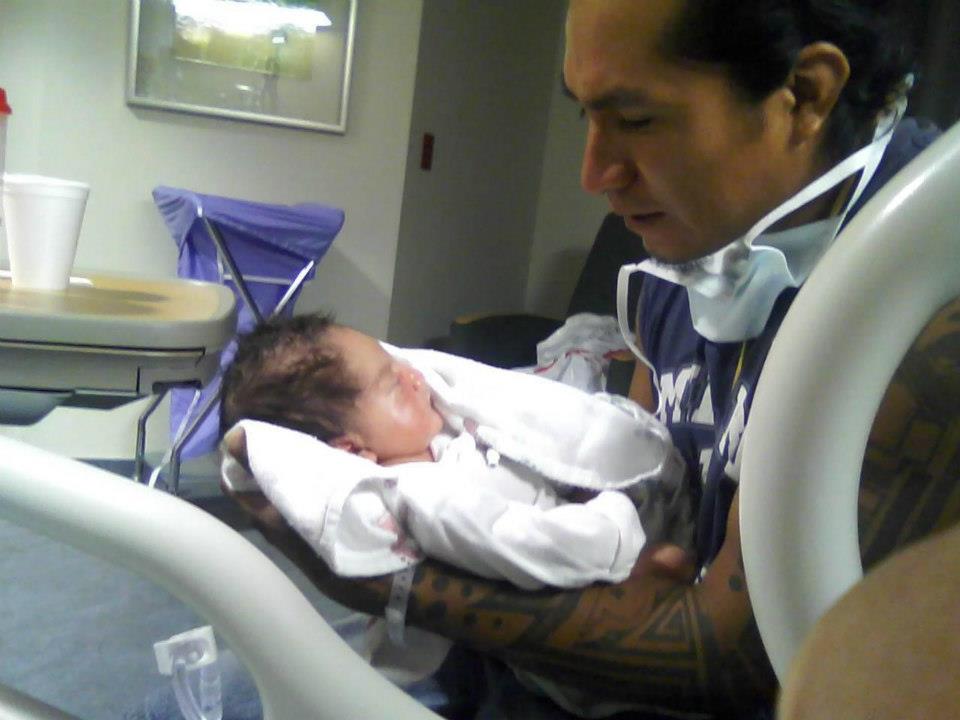Natives Call for Attention to Police Killing of Paiute Corey Kanosh
A recent Department of Justice report announced that as a percentage of the population, Natives are more likely than any other race to be shot by police. The Kanosh Band of Paiutes are calling for attention to the October 2012 shooting of Corey Kanosh, a 35-year-old Paiute man, who was shot by Millard County Deputy Dale Josse. Kanosh was the unarmed passenger in a car driven by his friend Dana Harnes, who is white. According to the Millard County Attorney’s investigation, Josse chased Kanosh some distance in the dark before calling for backup. Attorney Todd McFarlane said that may have been a decision that led to Kanosh’s death.
According to Deputy County Attorney Pat Finlinson, the case against Deputy Josse was dismissed without prejudice. “There is a review letter declining prosecution,” he said. “I can tell you pretty consistently, right now I wouldn’t be able to comment because of pending civil litigation.”
Kanosh’s case has not yet gone to court, but according to McFarlane, Kanosh was denied his constitutional rights when Josse and other officers neglected to provide medical attention for Kanosh after he was shot. “The constitutional right to life includes the right to prompt medical attention, especially when law enforcement is responsible for jeopardizing that right to life,” McFarlane said.
In taped interviews, Emergency Medical Team members state they were called on site more than half an hour after Kanosh was shot. They were allowed to check for a pulse but not permitted to move him. The two team members agreed they did not feel a pulse, however they could not confirm that Kanosh was deceased. McFarlane said that an undetected weak pulse is not uncommon, and that Kanosh was left where he fell in the dirt until the following morning.
In the sheriff’s report, the deputy admits he clearly saw that Harnes was driving the car and that Corey was the passenger. McFarlane wondered, “How do the police justify chasing the Native passenger versus the white driver? Corey was unarmed and had committed no crime.”

Recalling the evening of October 12, 2012, Millard County resident Dana Harnes, driver of the vehicle, spoke of an evening filled with too much beer and a car chase that ended with Kanosh’s death. Harnes was 21 years old at the time, and involved in a long-term relationship with Marlee Kanosh, Corey’s sister. Harnes had left work and was heading to Corey’s house in Marlee’s car. “We drank some beers and went out to cruise around and listen to some music. Me and Marlee were fighting because I was out drinking with the car.”
The two returned to the reservation and Kanosh’s mother, Marlene Pikyavit, offered them her car instead. “We went to the gas station, got more beers, and got some gas,” Harnes recalled.
Marlee noted, “My brother and Dana were intoxicated when they took my mother’s car. It’s a small community, and we were in fear of them being in an accident or hurting someone we know, so we called the sheriff’s deputy, and he was very kind and cooperative. He said, ‘Let’s make sure nothing happens in the community.’ After he left, he alerted the authorities that he was searching for a stolen vehicle,” she said.
Harnes and Kanosh were on their way back to the reservation when they saw the red and blue lights of the police vehicle. “I floored it to try to get away and headed up past the reservation,” Harnes said. “I tried to make a left on the dirt road and spun out, losing control of the car; then we were facing the cop head on and I continued to drive past him.”
Harnes said he was driving about 50 mph and was scared. “Corey directed me towards the reservation cemetery and the cop was right behind us. We went from the gravel to off-road terrain and then went up into the mountain. We were going so fast, hitting rocks, trying to stay on the road, and then the road disappeared and we hit the rocks and were stuck. Corey turned around and was trying to hide the beers. I ran out of the car, west towards the reservation and he ran east, towards the mountains.”
“The ground was all rocks and trees,” Harnes remembered. “I was running and fell, and I heard the cop talking to Corey, and then the ground disappeared beneath me and I ended up in a ravine. I came up on the other side and heard two guns shots, and then I heard Corey scream. Looking at the road, there were red and blue lights as far as the eye could see, and I wondered why they were after us. My flight for life kicked in and I took off and ran as far as I could go.”
Gari Lafferty, a neighbor and Kanosh relative, saw the mile-long line of police cars along Reservation Road from her home. “I live across the field from Corey’s mother’s home,” she said. “It was a cool October night and I had the window open. It was 30 to 40 minutes after the cops went into the foothills before all of the cops came. Within an hour after that, the reservation was flooded with highway patrol and they set up a perimeter around the reservation. I went to my sister’s house, and there was a SWAT team there, and the guy said, ‘You can’t come in.’ I asked, why; what was going on, and Corey’s mother told me Corey had been shot. Now it’s after 11, and I told my son, there’s an ambulance parked about a mile from my house, why haven’t they called it up for Corey? My cousins had gone up to the foothills and they were told to leave, and the first responders were already there. I thought, if one of them is hurt, why didn’t they offer any aid?”

A Pahvant Post article states, “Millard County Sheriff’s Office personnel delayed the EMTs from evaluating Corey, and then said that he was already dead, so there was no need to provide medical attention, and instructed the EMTs not to attempt to resuscitate.”
A while later, the sheriff came down and told the family that Corey had been killed. “I asked why he wasn’t rendered any aid, and they didn’t answer any of my questions,” Lafferty said. “After that came the helicopter with a spotlight, and it echoed off the mountains. You would have thought they were looking for a crazy murderer. The police officers were saying that Dana had a gun. They asked Marlene if Corey had any guns or weapons and Marlene said no. I told my son, why are all these cops here?”
Harnes made his way to Corey’s house and found the door unlocked. Bleeding from the fall, his clothes ripped from the terrain and brush, Harnes lay down behind the couch for the night. “I was hearing quads, I guess, and a helicopter—lights were flashing in the window and I heard dogs. I was so freaked out, I thought they were coming to kill me,” he said. “At about 7 or 8 in the morning, the police were knocking at the windows and knocking down the doors. I sat up and they shined the light in my eyes and had a machine gun pointed at me. They said raise your f***ing hands and pulled me out of the door. The school bus went by when they had me on the ground, and I looked down the road and it was still lined with cars.”
When Millard County Sheriff Robert Dekker was asked about the amount of force used against two men who had been drinking in a loaned, family member’s car, he responded, “They were called after they got out of the car and started to run. They were called to find the other subject.”
Harnes said he was placed in solitary confinement for 11 days without any communication. During that time, he was not told what the charges were, and was denied access to his attorney. Eventually Harnes found out they had charged him with grand theft auto, “which they had to drop because we were given the car by Marlee’s mom. They got me with third degree felony evading police, and driving with a suspended license,” Harnes said.
Sheriff Dekker said, “I think a lot has been misconstrued, so people can say what they want and our hands are tied with the real facts. It’s not a good situation for anybody and certainly not for the Kanosh family. They filed a lawsuit but it was withdrawn, but there is still time for them to file.”
Marlee Kanosh hopes to raise money for legal fees using gofundme.
Activists have rallied for the Kanosh case through protests and a Justice For Corey Kanosh Facebook page. Musician Young Jibwe dedicated the song “What’s Going On” to Kanosh, calling for answers to the violence against Natives.
Those who knew Kanosh remember him as a traditional pow wow dancer and the father of a newborn son, born just shortly before Kanosh’s death. Dana Harnes remembered, “We were buds. We camped together, fished together, had so many heart-to-hearts. That night we had the deepest conversation we’d ever had. He told me how much he appreciated me, how much our friendship meant to him. It was weird, like he knew what was going to happen.”

Activist Victor Puertas, Peruvian, has lived in Salt Lake City for 10 years, and said he has long been aware of racist attitudes. “You feel it, you experience it, most of the time it’s subtle. Utah is one of those states you don’t hear much about, but it is one place where police violence is happening. We want justice for the Kanosh family. They have been through a lot. There is a lot of tension between Natives and the police, who are almost all white.”
Describing her brother, Marlee Kanosh said, “He had his troubles, a lot of us carry burdens in life and Corey’s were extreme, but we are all human. People bring up his past, but what happened to him had nothing to do with his past and did not justify the shooting. He was my brother, my mother’s son, a very traditional man passing down traditions of our people. His past doesn’t define who he was the night he was shot.”
Read more at http://indiancountrytodaymedianetwork.com/2015/01/13/natives-call-attention-police-killing-paiute-corey-kanosh-158671